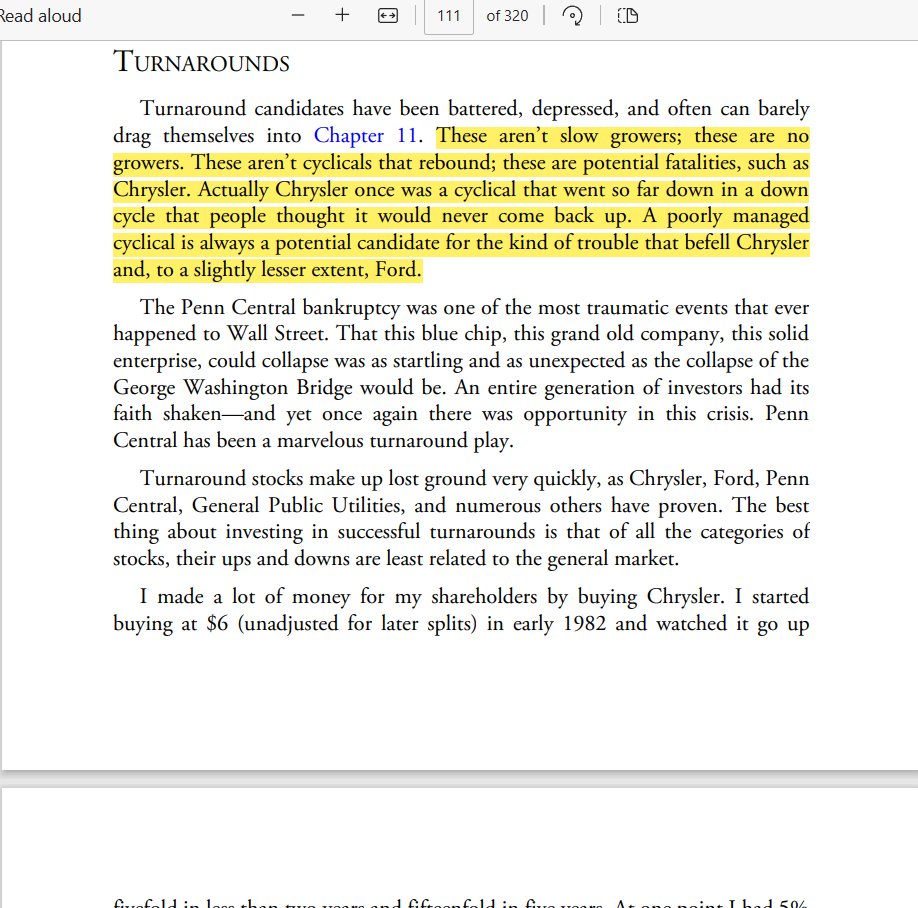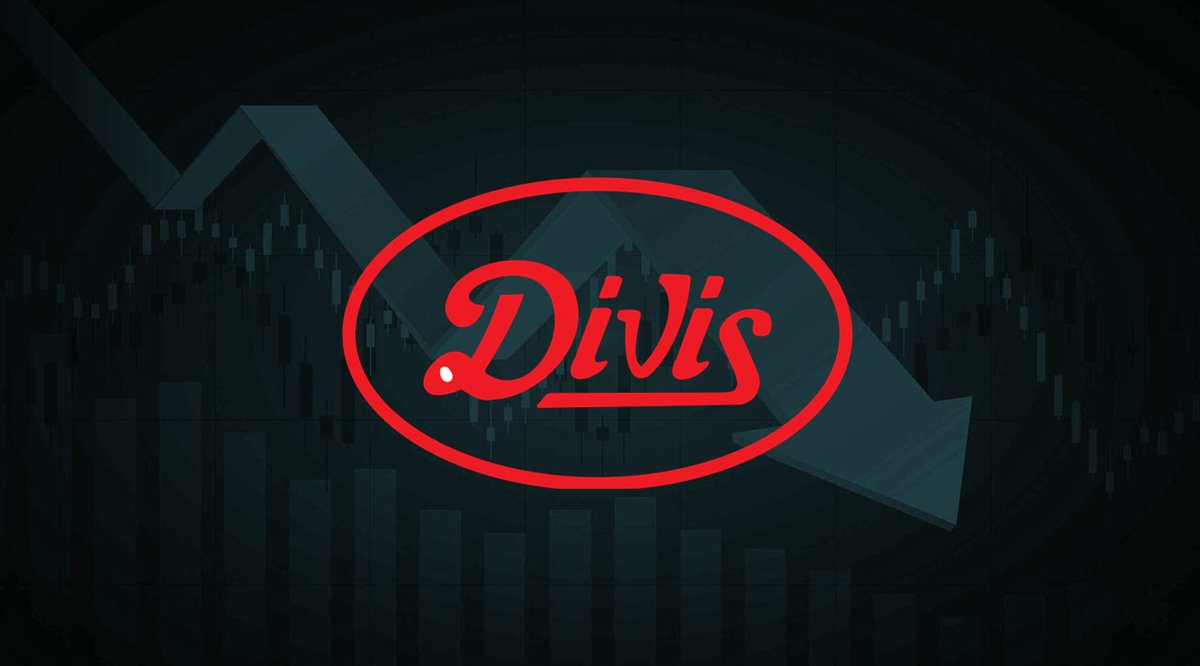
#PeterLynch is a renowned American investor & mutual fund manager, during his tenure, he achieved an CAGR of 29.2% from 1977-1990
In this detailed thread let's understand about his investment strategies with which he has generated this CAGR!
Like & Retweet for better reach
In this detailed thread let's understand about his investment strategies with which he has generated this CAGR!
Like & Retweet for better reach

There are 6 types of categories in which stocks can be placed:
Note: (Categories are just guidelines there are No hard and fast rules). He always tried to allocate all stocks in these 5 categories to make his research more manageable.
Note: (Categories are just guidelines there are No hard and fast rules). He always tried to allocate all stocks in these 5 categories to make his research more manageable.
There are 6 Categories:
A- Slow Grower
B- Stalwarts
C- Fast Grower
D- Cyclical
E- Turnarounds
F-Asset-Plays
Let's understand about these categories in detail!
A- Slow Grower
B- Stalwarts
C- Fast Grower
D- Cyclical
E- Turnarounds
F-Asset-Plays
Let's understand about these categories in detail!
1. Slow Growers(sluggards):
Slow growers are Usually Large (e.g., Procter and gamble). Most of the Earnings given to Shareholders in the form of Dividend. slow growers are often companies that are large (i.e., they have a high market capitalization).
Slow growers are Usually Large (e.g., Procter and gamble). Most of the Earnings given to Shareholders in the form of Dividend. slow growers are often companies that are large (i.e., they have a high market capitalization).
and have experienced fast growth in the past. Currently, they are growing at a rate slower than the growth of the economy. Some reasons for their declining growth rate could be due to the lack of meaningful investment opportunities. 

Key points to look in Slow Growers:
A-How safe is their Dividend?
B-At what rate can they increase their Dividend?
C- Would they ever cut the Dividend?
A-How safe is their Dividend?
B-At what rate can they increase their Dividend?
C- Would they ever cut the Dividend?
2. Stalwarts (Blue-Chips):
Stalwarts are companies such as Coca-Cola, Procter and Gamble. These are multibillion-dollar hulks and give average returns, they’re faster than slow growers. Depending on when you buy them and at what price, you can make a sizable profit in stalwarts.
Stalwarts are companies such as Coca-Cola, Procter and Gamble. These are multibillion-dollar hulks and give average returns, they’re faster than slow growers. Depending on when you buy them and at what price, you can make a sizable profit in stalwarts.

Basically, good to hold in hard times, especially basic necessity stocks.
Usually, Decent returns (Not bad, not great).
Key Points to look in stalwarts:
When they are available at discount ask these questions?
A- Is the temporary bad news pushing the price down?
Usually, Decent returns (Not bad, not great).
Key Points to look in stalwarts:
When they are available at discount ask these questions?
A- Is the temporary bad news pushing the price down?
B- Is it uncharacteristically trading at a Lower P/e relative to past performance?
C- Is it justified or an overreaction to something?
C- Is it justified or an overreaction to something?
3. Fast growers: Companies which are small aggressive new enterprises that grow at 20 to 25 percent a (E.g., Walmart). If you choose wisely, this is the land of the10-to 40-baggers, and even the 200-baggers. With a small portfolio, one or two of these can make a career.
Once a fast grower gets too big, that they can’t grow anymore. ere’s simply no place for it to expand. 

Key Points to look in Fast Growers:
A-Being aware of Risk.
B-poor management or corporate governance issue.
Under-Financed
C-Look for solid Balance sheet and Healthy Margins
D-Pay special attention to their financial statements.
A-Being aware of Risk.
B-poor management or corporate governance issue.
Under-Financed
C-Look for solid Balance sheet and Healthy Margins
D-Pay special attention to their financial statements.
4. Cyclicals: A cyclical company is one that experiences regular ups and downs in its sales and profits (E.G. AMR Corporation). This happens because the industry it operates in also goes through periods of expansion and contraction.
For example, when the economy is doing well, people buy more cars, take more flights, and there is more demand for products like steel and chemicals. However, when the economy slows down, these companies suffer, and their shareholders can lose a lot of money quickly.
It's important to be careful when investing in cyclicals because if you invest at the wrong time, it may take a long time before you see a profit again. 

Key points to look in Cyclicals:
A-This largely depends on your Qualitative Edge (having more information than other people).
B-Do you work for these companies?
C-Do you know why they are suffering? And what would it take to get them out?
A-This largely depends on your Qualitative Edge (having more information than other people).
B-Do you work for these companies?
C-Do you know why they are suffering? And what would it take to get them out?
5. Turnarounds: Companies that have been battered down or depressed-Lynch calls these "no-growers"(Penn Central). When it comes to turnaround companies, Lynch believed that it was possible to make significant profits.
if you could identify companies that were experiencing temporary problems but had the potential to recover and grow in the future. These companies are just trying to get outside the Mud. These are also the most likely scenarios where people can easily lose the money. 

Key Points to look in Turnarounds:
A- Can it survive during downfall?
B- When will it Turn Around?
C- Most of these companies' success is in Balance sheet how bad is the debt?
D- Perhaps if you pick a winner, if drops by 50% more will you still hold it?
A- Can it survive during downfall?
B- When will it Turn Around?
C- Most of these companies' success is in Balance sheet how bad is the debt?
D- Perhaps if you pick a winner, if drops by 50% more will you still hold it?
6. Asset Plays- Unrealized Gems:
An "asset play" is when you invest in a company that has something valuable that most people don't know about or don't fully appreciate. This could be anything from a valuable piece of property to a patent on a new technology.
An "asset play" is when you invest in a company that has something valuable that most people don't know about or don't fully appreciate. This could be anything from a valuable piece of property to a patent on a new technology.
The idea is that if you can identify these undervalued assets before the broader market catches on, you can make a profit by buying the company's stock while it's still cheap and then selling it for a higher price later on when the true value of the assets is (e.g., Pebble Beach)
This strategy requires a bit of detective work to identify these overlooked assets, and often requires local knowledge or specialized expertise. But if you can find an overlooked gem, it can be a great way to make money in the stock market. 

Key points to look in Asset-plays:
A-Why is it Ignored by people?
B- Keep checking on the story of the company as to what's happening.
C-Do you know how to price assets better than other people? (Possibly from your edge).
D- Is it relatively available at discount?
A-Why is it Ignored by people?
B- Keep checking on the story of the company as to what's happening.
C-Do you know how to price assets better than other people? (Possibly from your edge).
D- Is it relatively available at discount?
Do check out Micro Cap Club:
bit.ly/3zYY8OS
bit.ly/3zYY8OS
• • •
Missing some Tweet in this thread? You can try to
force a refresh













